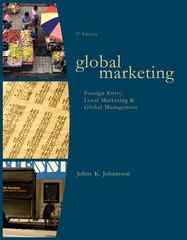2. Relative and absolute risk aversion Consider a consumer with each of the following utility functions: i ) u(x ) = -ex ii ) u (x) = In(x) iii) u( x ) = x/ 2a. For each of the utility functions above, compute the coefficient of absolute risk aversion and the coefficient of relative risk aversion. The consumer faces one of two possible risks: La: with probability /2, no loss occurs, and with probability /2, a loss of $10 occurs. Lb: with probability /2, no loss occurs, and with probability /2, a loss of 10% of wealth occurs. 2b. Compute the maximum a consumer with utility function (i) above will pay for full insurance against risk La when initial wealth is w = 100 and when initial wealth is w = 200.20. Compute the maximum a consumer with utility function (ii) above will pay for full insurance against risk Lb when initial wealth is w = 100 and when initial wealth is w = 200. 2d. Compute the maximum a consumer with utility inction (iii) above will pay for ll] insurance against risk La when initial wealth is w = 100 and when initial wealth is w = 200. 2e. Part b of this question illustrates constant absolute risk aversion. Part 0 illustrates constant relative risk aversion. Part (1 illustrates decreasing absolute risk aversion. Very briey explain how. 1. Risk Loving Behavior: Consider a risk-loving decision with initial wealth w who faces a lottery that pays $1: with probability '/2 and -$x with probability 'z'. la. Draw a diagram labeling (i) w and the outcomes of the lotteries, (ii) u(w) and the expected utility of the lottery, and (iii) the certainty equivalent of the lottery. 1b. How does u{w} compare to the EU of the lottery? lc. How does the expected value of the lottery compare to the certainty equivalent? 3. An individual has his portfolio invested in such a way that its possible values are: $70,000 with probability .25 $60,000 with probability .25 $50,000 with probability .50 The individual's expected utility mction is 1 m where W is wealth. W 3a. What is the individual's expected wealth? 3b. What is the individual's expected utility? 3e. Suppose the individual has the opportunity to change his portfolio. The new portfolio would be $85,000 with probability .25 $60,000 with probability .25 $45,000 with probability .50 Would the individual do this? Explain










